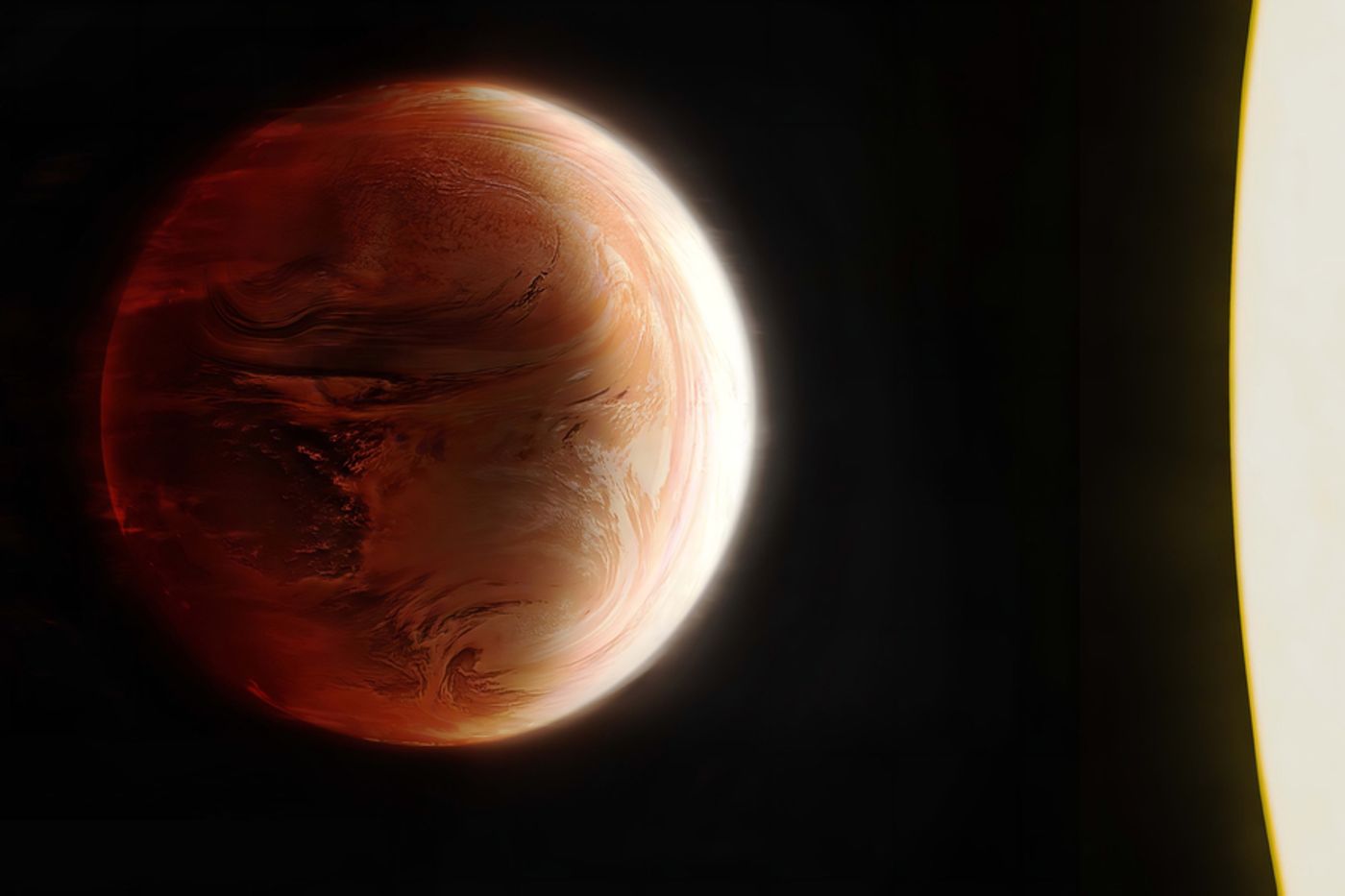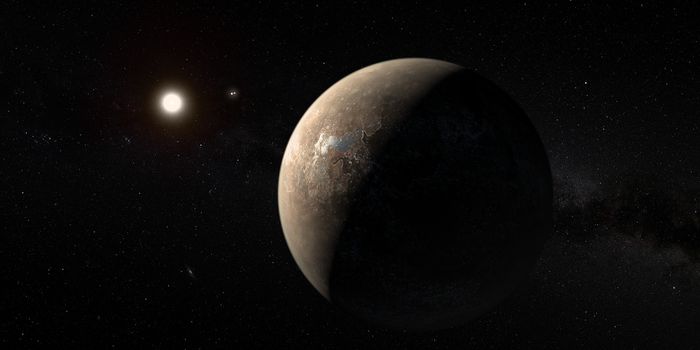An Exoplanet's Dark Side: Cloudy with a Chance of Raining Gems
Astronomers at Massachusetts Institute of Technology recently published the first global view of the atmosphere of an exoplanet in Nature Astronomy. By mapping the temperature of the exoplanet across its surface and at different depths in its atmosphere, astronomers can begin to understand the global cycles of matter and energy in exoplanet atmospheres.
The exoplanet WASP-121b, first discovered in 2015, located approximately 850 light years (or 5 quadrillion miles) from Earth, is part of a class of exoplanets called “hot Jupiters” – gas planets that are on close orbits around their parent stars, separated only by a few stellar diameters. WASP-121b is 20% more massive than Jupiter, and has a diameter that is nearly twice as large. This planet has one of the shortest orbits ever detected, completing an orbit in 30 hours (recall: Earth takes 365 days to orbit the Sun). Additionally, WASP-121b is tidally locked – the planet requires the same amount of time to orbit around its host star as it needs to rotate once on its axis – meaning one side of the planet will always face the star, permanently experiencing daytime and superheating the atmosphere of this hemisphere, while the other side will always face away from the star, permanently experiencing nighttime.
Observations of the day side and night side of WASP-121 b throughout two full orbits were obtained with NASA’s Hubble Space Telescope, giving clues to the atmosphere’s temperature and composition across the exoplanet. The team paid attention to specific features in the spectra that indicate the presence of water vapor, allowing them to map how these features changed throughout the planet’s orbit. Previously, this has been done for the day side of many exoplanets, but the night side of these tidally locked planets is much fainter, and thus making data much more difficult to obtain. The team was able to obtain the clearest view of the perpetual dark side of an exoplanet to date. These temperature profiles were incorporated into atmospheric computer models which told the team which chemicals were most likely to exist in the planet’s atmosphere.
The team used the data to study how water circulates between the day side and the night side, becoming the very first time astronomers were able to study the complete water cycle of an exoplanet, finding that it is much more exotic than the water cycle on Earth. On Earth water is constantly changing its physical state: solid ice melts into liquid water, water evaporates into a gas, then condenses into droplets that form clouds, the droplets then grow to raindrops, falling down to Earth’s surface, and the cycle begins again. On the day side of WASP-121 b, water is ripped apart into its atomic constituents due to very high temperatures (3,000 K), then blown around to the night side by winds that are driven by the extreme temperature difference between the two hemispheres. On the dark side, the cold temperatures (1,500 K) allow hydrogen and oxygen atoms to recombine into water molecules, but temperatures are too high for water clouds to form, let alone rain. Instead, clouds made of metals (e.g., iron, corundum – a mineral that makes up rubies and sapphires, etc.) form. These metal clouds are then blown back to the day side for the cycle to begin again. The high temperatures of the day side vaporize the metals, potentially producing exotic rain unlike anything we experience on Earth, such as liquid gems from these metallic clouds. The team has been awarded time on the James Webb Space Telescope to further understand weather on WASP-121b.
Sources: Massachusetts Institute of Technology, Max Planck Institute for Astronomy, Science Daily









